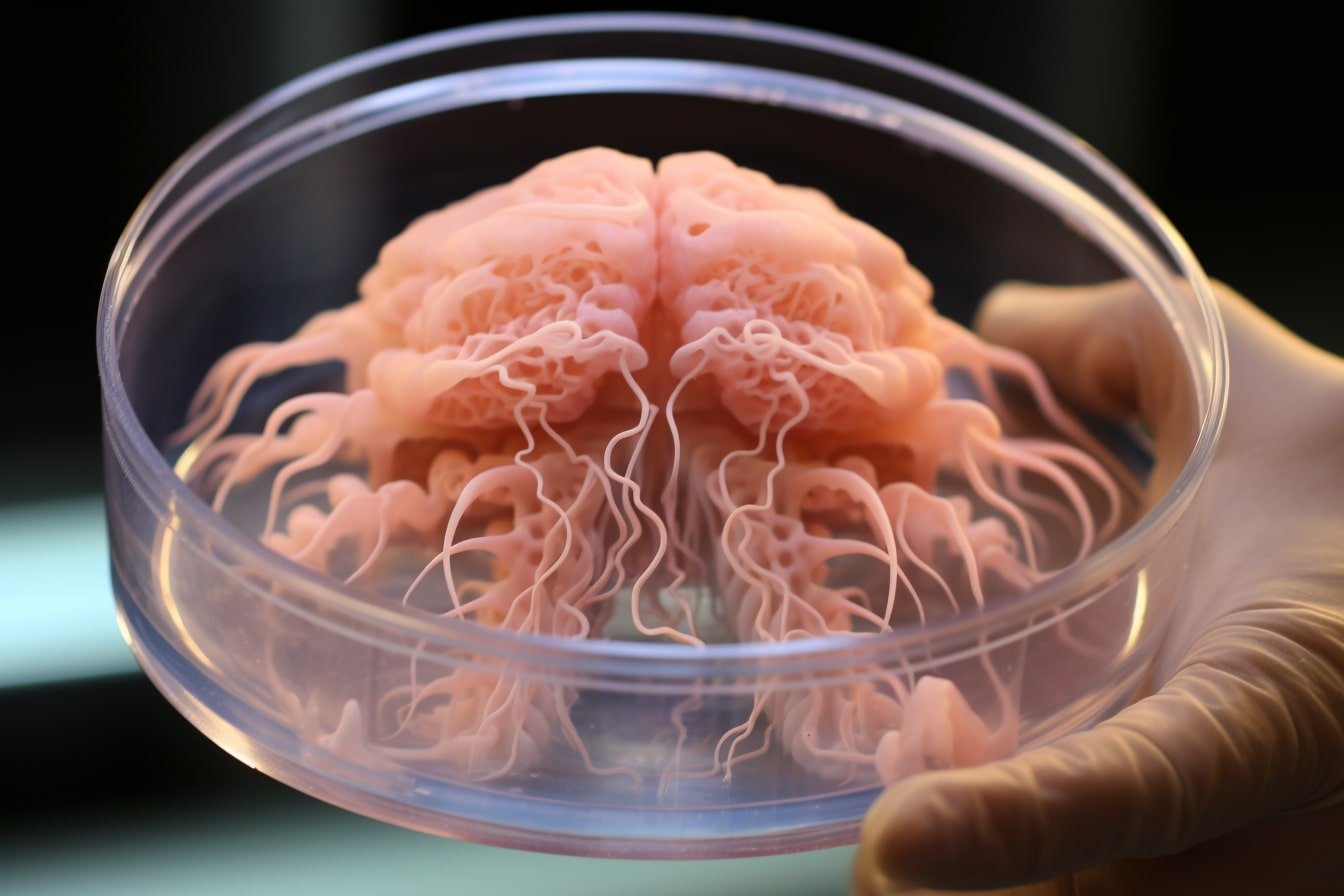It’s cool, but also creepy. I hope that image is just a fanciful impression of what it could look like.
At what point do such things achieve sufficient neurodensity to have rights?
I’m about 99% certain that the image in the article is some AI-generated nightmare fuel. There’s a link to the actual paper at the bottom of the article, and it has this figure showing a few example organoids, which are ~10mm across and look a bit like white mushrooms.
The ethical dilemma posed by a brain in a petri dish is an interesting hypothetical, but probably not one worth worrying about at this point. There’s less brain tissue here than in the average lab mouse, with no sensory inputs and little differentiation relative to a real human brain. The neurons in the organoids are probably able to do as neurons do individually, but they lack the structure or infrastructure required for them to have basic awareness, let alone consciousness.
Organoids like these can be useful for in-vivo study of brain tissue without the ethical troubles of rooting around in somebody’s head now, but that’s about it. We’re a very long way from growing a brain-in-a-jar and hooking it up to The Matrix.
I don’t know a lot about biology or things like that, and this is probably a bit of a mess of a thought, but a lab grown brain in a jar could have some really interesting implications if given, say, a computer, as it’s sensory inputs and ways of interacting with the world.
Would it know what it was? How might it socialize? What would it do on the internet? Would it understand the difference between real human controlled characters and AI characters in a video game? How effective might it be at learning our languages, and communicating with us in them? What might be the most effective way/medium for it to learn a language?
I think it would be really interesting to study, and I don’t imagine there would be many ethical issues?




